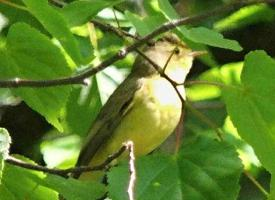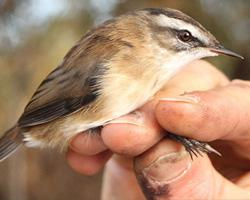
Súlyok és méretek
| Hossz | 12-tól 14-ig cm |
|---|---|
| Súly | 14-tól 20-ig g |
Veszélyeztetettség
| Veszélyeztetett |
Állatleírás
The Icterine Warbler (Hippolais icterina) is a captivating small bird that belongs to the Acrocephalidae family, which is known for its diverse array of warbler species. This species is particularly admired by birdwatchers and ornithologists for its melodious song and distinctive appearance. It breeds across much of Europe and parts of western Asia, favoring deciduous forests, thickets, and woodland edges, particularly those rich in willow and birch. During the winter months, it migrates to sub-Saharan Africa, showcasing an impressive journey that highlights its resilience and adaptability.An adult Icterine Warbler typically measures about 13 to 15 centimeters in length, with a wingspan ranging from 20 to 22 centimeters, making it a relatively small bird. Its weight varies between 11 to 20 grams, depending on factors such as age, sex, and time of year. One of the most striking features of this bird is its plumage, which exhibits shades of green and yellow, blending seamlessly with the leafy environments it inhabits. The upper parts are generally olive-green, while the underparts are a brighter yellow, creating a vivid contrast that is both beautiful and functional, providing camouflage among foliage.
The head of the Icterine Warbler is characterized by its pale supercilium (eyebrow stripe) which contrasts with its darker eye stripe, giving it a distinctive facial pattern that aids in species identification. Its bill is relatively long and pointed, perfectly adapted for gleaning insects from leaves and branches, which constitutes the majority of its diet. Insects, including caterpillars, beetles, and flies, are crucial for the warbler, especially during the breeding season when it needs additional energy for nesting and feeding its young.
Vocally, the Icterine Warbler is a virtuoso, known for its rich and varied song that includes a mix of melodious phrases, trills, and mimicry of other bird species. Its song plays a vital role in territorial defense and attracting a mate during the breeding season. The bird's ability to imitate other species' calls is so advanced that it can sometimes be mistaken for other birds when heard but not seen.
Breeding usually takes place between late May and July. The Icterine Warbler is monogamous, with pairs forming each breeding season. The female builds a cup-shaped nest hidden among dense foliage or in a low shrub, where she lays 4 to 6 eggs. These eggs are incubated primarily by the female for about 11 to 14 days before hatching. Both parents are involved in feeding the chicks, which fledge approximately 10 to 14 days after hatching, showcasing a rapid development from nestling to fledgling.
As a migratory species, the Icterine Warbler faces challenges such as habitat loss, climate change, and obstacles during migration. However, it currently does not fall into any of the threatened categories on the IUCN Red List, largely due to its wide range and relatively stable population size. Conservation efforts aimed at preserving its breeding and wintering habitats are crucial for ensuring the species' long-term survival.
In summary, the Icterine Warbler is a remarkable bird, not only for its beautiful plumage and melodious song but also for its fascinating life cycle and migratory behavior. Its presence enriches the ecosystems it inhabits, and its yearly journey between Europe and Africa is a testament to the incredible endurance and adaptability of the avian world.
Hasonló állatok
Új állatfotók
Top 10 állat
- Dolphin gull (Leucophaeus scoresbii)
- Japanese macaque (Macaca fuscata)
- Stone loach (Barbatula barbatula)
- Galápagos tortoise (Geochelone nigra complex)
- Russian tortoise (Testudo horsfieldii)
- Diana monkey (Cercopithecus diana)
- Greek tortoise (Testudo graeca)
- Common flying dragon (Draco volans)
- Moustached guenon (Cercopithecus cephus)
- Galápagos penguin (Spheniscus mendiculus)


